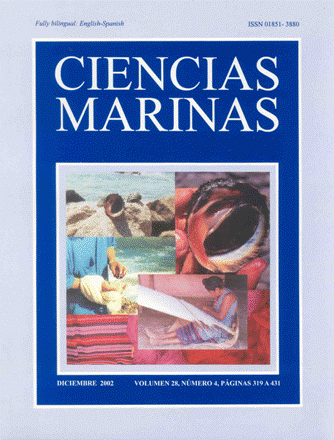Spatial patterns of the yellowfin tuna (Thunnus albacares) in the Eastern Pacific Ocean: an exploration of concentration profiles
Main Article Content
Abstract
The spatial distribution of the yellowfin tuna (Thunnus albacares) abundance in the Eastern Pacific Ocean was studied from commercial catches by the Mexican tuna-fishing fleet. Concentration profiles were carried out as indicators of a realtionship between catch-per-unit effort (CPUE) and fish abundance for the period from 1992 to 1996. Spatial and temporal resolution "units" were defined by means of a semi-variogram and serial correlation analyses, respectively. The unit resolutions obtained for catch data were 1 × 1 degree (spatial) and monthly (temporal). Catch values were standardized by means of robust regression. Fish resource spatial distribution patterns were identified and estimated catch-values were obtained with Generalized Additive Models. From these estimates, a CPUE time-space matrix CPUE was defined with 60 months and 1029 locations. Nine timespace patterns explained more than 80% of the variability. Individual spatial patterns were analyzed and spatial regions were defined with homogeneous CPUE values. Similarities between the CPUE and the concentration profiles (covered area) suggest that the CPUE-relative abundance relationship is not directly proportional which indicates hyperdepletion processes. Fishery management implications are also discussed in this study.
Downloads
Article Details
This is an open access article distributed under a Creative Commons Attribution 4.0 License, which allows you to share and adapt the work, as long as you give appropriate credit to the original author(s) and the source, provide a link to the Creative Commons license, and indicate if changes were made. Figures, tables and other elements in the article are included in the article’s CC BY 4.0 license, unless otherwise indicated. The journal title is protected by copyrights and not subject to this license. Full license deed can be viewed here.

